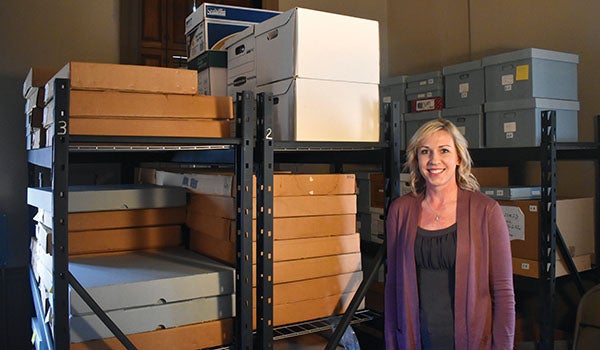Curatorial fellowship meant to help manage Niles History Center’s vast collection
Published 8:39 am Wednesday, January 8, 2020
NILES — Inside Niles’ historic Chapin Mansion, nestled behind a dining room detailed with ornate decorative fixtures, behind a doorknob once turned by servants to deliver meals at the turn of the 20th century, sat Ericka Hartley.
In front of her was a desk, a laptop, a lamp, a bit of sunlight through a window and a metal artifact. Next to her was another room, filled with approximately 400,000 artifacts more, lit only by a single standing lamp.
Hartley is not exactly sure how many artifacts there are, but as the Niles History Center’s first curatorial fellow, she is working to get a better sense.
Hartley is tasked with creating a better long-term collection management plan for the objects found around the 17th-century site of Fort St. Joseph near Bond Street in Niles, dug up by Western Michigan University archaeological crews and picked up from the grass or the St. Joseph River’s bed by passersby.
By identifying, cataloguing, reorganizing and better preserving the artifacts, scholars and history enthusiasts benefit, said Christina Arseneau, history center director.
“It’s a really rich collection that we have, and doing this project is going to make it more accessible for everybody,” she said.
Currently, many artifacts are stored in boxes that are not acid-free, which could gradually damage their contents. Some are catalogued, others are not. The approximately 100,000 items found before the WMU archaeological project began two decades ago are especially likely to be disorganized.
That is where Hartley steps in.
Hartley worked alongside Michael Nessaney, the professor behind the WMU archaeological project. She went from graduate teaching assistant to field director at the yearly summer project.
Now, she is both an anthropology professor at Jackson College in Jackson, Michigan, and as a donation-funded fellow of the Niles History Center.
Hartley began her work as a fellow in January 2019.
She spent her winter, spring and summer at Fort Michilimackinac, a museum in Mackinaw City, Michigan, and a state repository in Lansing. She studied how both places categorized and stored artifacts, and what was most important for the management of each place.
Then, in the fall of 2019, she began categorizing, storing and managing herself at the Niles History Center.
The collection had been partially managed before, starting in 1977, when studies on some of the artifacts began.
Since the archaeological project began more than 20 years ago, students and faculty take their findings back to campus to study and inventory them. Then, the items were sent to the history center, where people organized some and moved all to Chapin Mansion.
In the years since, the history center has gotten a better sense of how to display objects, which objects to display and what kinds of research might be conducted. So, a new management system is being created.
“By creating a detailed list of the items that were recovered before the project, there’s also additional information that people can find out, too,” Hartley said.
To aid in management, the history center is seeking funding for a matching grant. As of Monday afternoon, it was $100 shy of its $5,000 goal.
Donations can be mailed to the Niles History Center, 508 E. Main St., or delivered in person Wednesday to Saturday from 10 a.m. to 4 p.m. They will fund better preservation methods, such as acid-free boxes with organizational inserts.
Meanwhile, Hartley will continue to organize the history center’s hundreds of thousands of items piece by piece, preserving the history of decades of work, of Niles and of a centuries-old fort.







